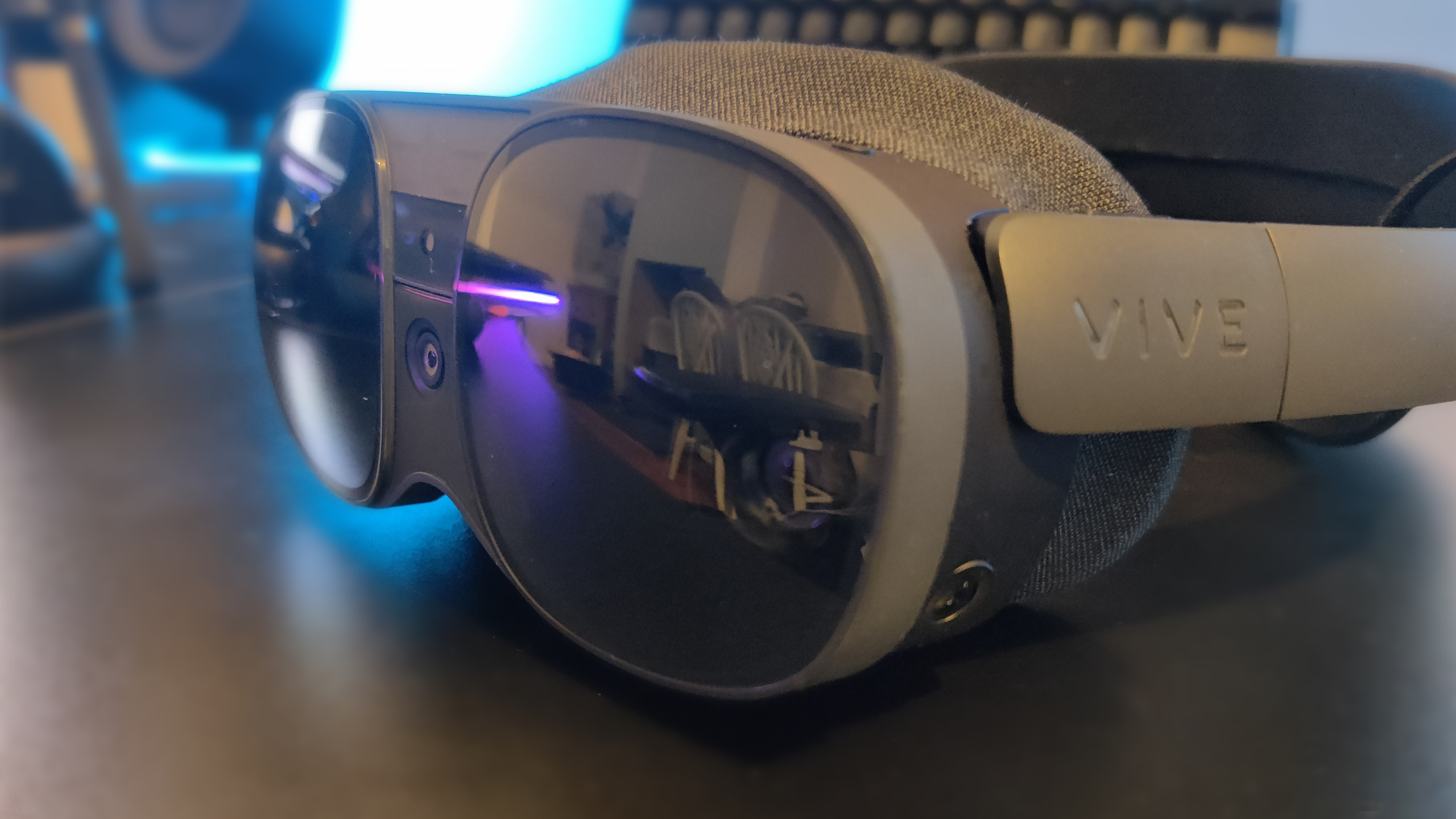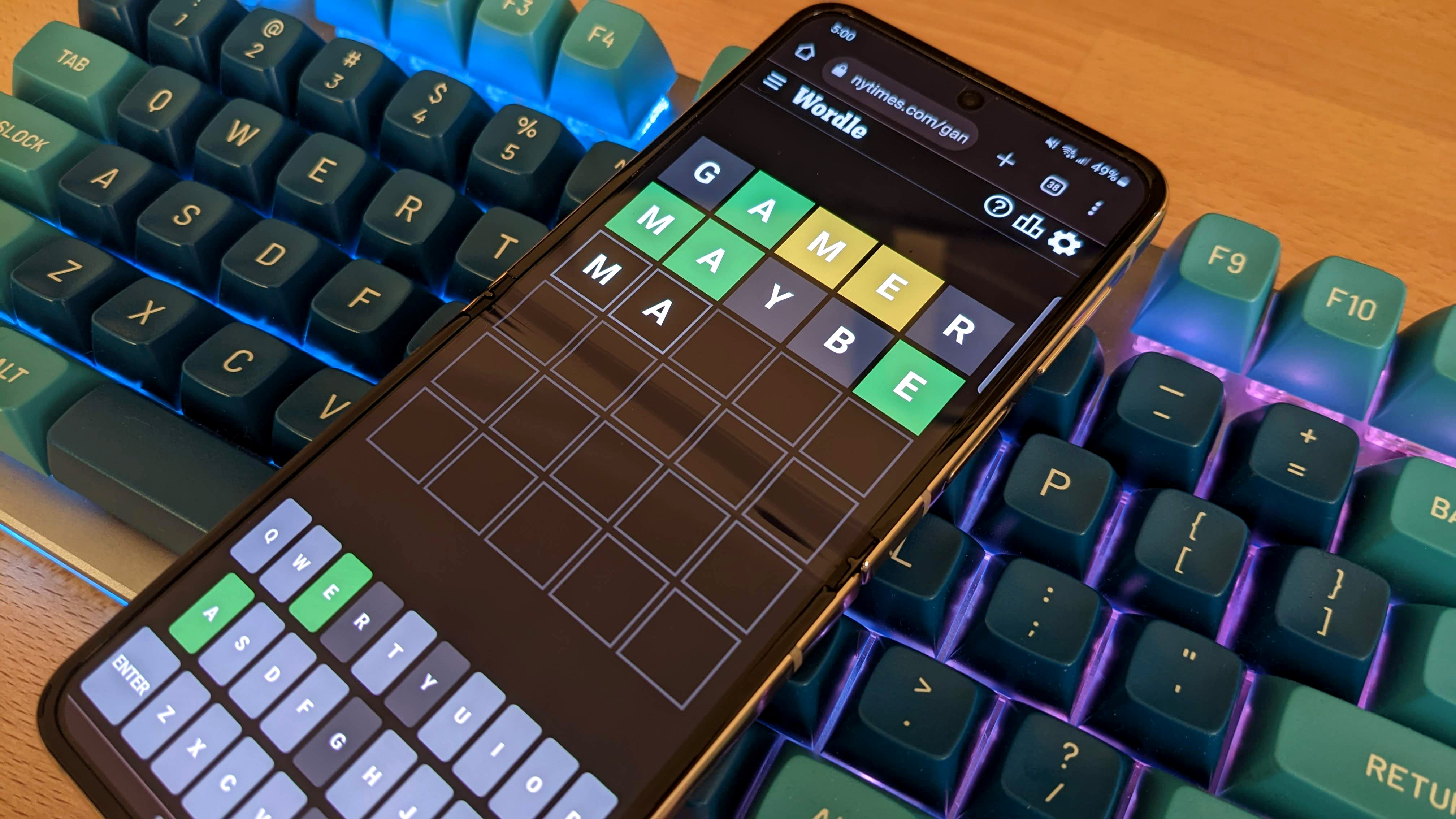
All-in-one XR headset with easy PC VR streaming setup, but with some real drawbacks for the price.
In a VR landscape headed by the Meta Quest 2, with its affordable and effortless design, any VR headset entry has a lot to contend with. The HTC Vive XR Elite makes a good bat as a standalone, high end PC VR headset, and the specs really look great on the box. But there are a few things to consider especially as PC gamers, and especially when it comes in at $1,099 / £1,299—over two-and-a-half times the price of the Quest 2.
It has to be said that the HTC Vive XR Elite is one of the least ugly headsets I’ve seen, and with it HTC’s vision of a super lightweight XR headset has been realised. Not only does it sit comfortably on my head, it’s perfectly weighted between the front and the back, and avoids piling its 614 grams of weight on the nose area.
Being able to breathe in VR is always a plus, and with non-intrusive cooling that exhausts out the top it’s easy to wear for hours. Or it would be, if that were possible.
HTC has done everything in its power to push the Vive XR Elite’s portability factor to the max and make the most of that lightness. Sadly, although the battery life is rated to 15 hours, that’s closer to one and a half hours in gaming, and that means it falls behind the Quest 2 by a good half an hour.
Tracking: 6 DoF inside-out
Display: LCD
Resolution: 3840 x 1920 (1920 x 1920 per eye)
Refresh Rate: 90Hz
Processor: Snapdragon XR2
FOV: ~110 degrees
IPD: 54-73mm
Audio: Dual mics, embedded speakers
Inputs: USB Type-C 3.2 Gen-1
Battery life: 24.32Wh | 15hrs rated / ~1:30hrs gaming
Weight: 1.35lbs (614g) with battery / 9.6oz (260g) without
Price: $1,099 | £1,299
As for the controllers, I got a good couple of sessions out of a full charge, though for some reason one of them keeps turning itself on at random. It happened a few times where I hadn’t moved, or pressed anything. The headset wasn’t even attached to the battery.
Speaking of which, the HTC Vive XR Elite is convertible, meaning it can be used sans battery. Plug it straight into your PC and you’re looking at a mere 260g on your head, but it means you have to deal with the included glasses-like attachments. I’ve had real trouble with these as they aren’t adjustable, and they dig pretty hard into the side of my head. The only way to get it to feel comfortable is to wear it more like a tiara than a pair of glasses, which ends up causing it to slip.
When you’re tethered to your PC that’s a dangerous combo; one tug and that £1,300 headset is sent tumbling. The included USB Type-C to Type-C cable really isn’t long enough, either, unless you’re sitting right at your desk. And that’s not ideal for VR games where you’re flailing your arms around a lot.
The HTC Vive XR Elite controller. (Image credit: Future)
Acquiring a USB 3.2 Gen 2 Vive streaming cable from HTC will set you back another $79. The cable works great, and provides much more freedom along with a much higher bandwidth than the included cable. I had no issues setting up the game streaming side of things, though. So even those without a USB Type-C connection should be good as long as they have good Wi-Fi.
The HTC Vive XR Elite in convertible form. (Image credit: Future)
✅ You can handle low refresh rates: Even the mighty fall to VR sickness at low refresh rates, and the Vive XR Elite tops out at a measly 90Hz.
✅ You value simplicity: No base stations, an easy streaming setup, and good software UI make the Vive XR Elite simple to use.
❌ You’re looking for precision: The controller and finger tracking aren’t the most accurate around.
❌ You live in the UK: The Vive Pro 2 is the same price (maybe cheaper today) so it’s worth getting a better display and refresh for your money.
❌ You’re looking to save money: The Vive XR Elite is more than two-and-a-half times the price of the Quest 2 (even after the price hike) but doesn’t quite match the spec.
Sadly, although the setup is a breeze thanks to the lack of base stations, the Vive XR Elite’s tracking leaves something to be desired. Particularly when it comes to finger tracking, the accuracy isn’t great even when in full view of the headset’s cameras. Pair that with the dreaded screendoor effect around the periphery, and the trailing effect caused by a low 90Hz refresh rate and I didn’t have the best time. I ended up feeling a bit sick after an hour or so of playing Half Life: Alyx, which doesn’t usually happen for me.
At the end of the day, the HTC Vive XR Elite is more expensive, heavier, and with a weaker battery life than the Quest 2. While there’s something to be said about the XR functionality with its vivid passthrough, as well as genuine comfort, easy-as-pie setup, and portability, it’s hard to recommend for PC gamers thanks to the poor tracking and low refresh.
In the US, it’s certainly cheaper than its sister the HTC Vive Pro 2‘s $1,399 price tag, though not by a great deal. Especially as it’s the same price as the Vive XR Elite in the UK I’m inclined to recommend the Pro 2 if you have the money to burn. That way you get one of the best displays ever to grace VR, according to our best VR headsets guide, and won’t have to be concerned about the low refresh rate.






